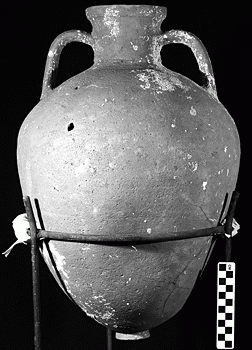American Journal of Archaeology | The Journal of the Archaeological Institute of America
You are here
Inconspicuous Consumption: The Sixth-Century B.C.E. Shipwreck at Pabuç Burnu, Turkey
October 2008 (112.4)
Inconspicuous Consumption: The Sixth-Century B.C.E. Shipwreck at Pabuç Burnu, Turkey
In the first half, probably the second quarter, of the sixth century B.C.E., a ship sank off the coast of Pabuç Burnu, Turkey, southeast of Bodrum (ancient Halikarnassos). Excavated by the Institute of Nautical Archaeology in 2002 and 2003, the preserved ceramic cargo and hull remains of the vessel provide evidence for the development of production and exchange systems in the Archaic period. The circulation of agricultural products in a moderate-sized merchant vessel—carrying a load of well under 10 tons—speaks for a practice of local transport designed to operate in a rather different framework of consumption from the exchange of luxury items catalogued by early Greek lyric poets or the optimized mechanisms utilized in the markets of classical Athens. This preliminary report of the shipís cargo and construction situates the vessel within the developing commercial environment of standardized quality and quantity in the archaic eastern Mediterranean.
Inconspicuous Consumption: The Sixth-Century B.C.E. Shipwreck at Pabuç Burnu, Turkey
By Elizabeth S. Greene, Mark L. Lawall, and Mark E. Polzer
American Journal of Archaeology Vol. 112, No. 4 (October 2008), pp. 685–711
DOI: 10.3764/aja.112.4.685
© 2008 Archaeological Institute of America


